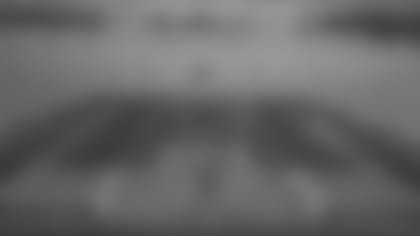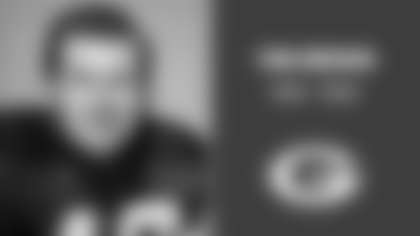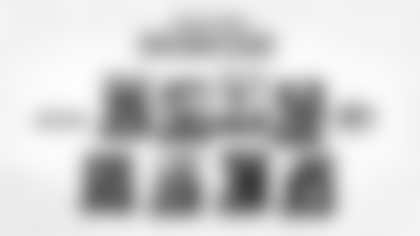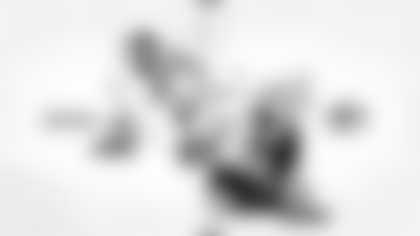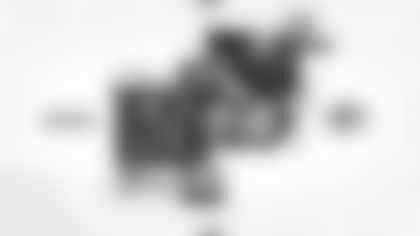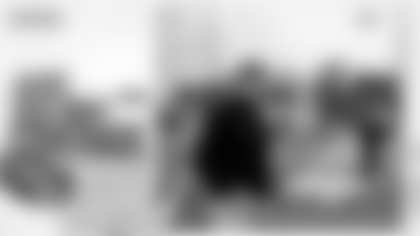The Packers have begun using, on a trial basis for now, a system of lights from a company called Stadium Grow Lighting (SGL) to try to keep the grass on Lambeau Field growing later into the season.
The artificial lighting structures, which cover roughly 30 percent of the field and are moved around in one- to two-day intervals where needed, produce light rays that plants need to grow. As autumn progresses in Wisconsin, Lambeau's grass gets less and less natural light and stops growing long before the season ends.
But with the SGL lights, the hope is to extend the growing season for a month or two to help keep Lambeau Field in the best possible playing shape all season long.
"We're always looking for different ways to keep the field in great condition," fields manager Allen Johnson said. "Mother Nature provides so many variables to grow things, and when she takes them away, it's hard to replace them.
"This is just one more tool that we can try to see if it can help us out. We're trying our best to mimic Mother Nature, short of building a greenhouse."
That's how the concept originated, over in Europe, as a growing tool in greenhouses. It expanded in 2004 for use in soccer stadiums, both to reduce (if not eliminate) the number of times teams would have to re-sod their fields during the season, and also to help some teams keep a natural-grass surface rather than switching to an artificial one.
The technology has been used in dozens of soccer stadiums in Europe and was used in five of the 2010 World Cup stadiums in Africa.
The Packers are the first North American team to experiment with it, having been loaned the equipment on a trial basis for the 2010 season. The system was first set up on Oct. 7 and used for a week prior to the Oct. 17 home game vs. Miami.
Johnson said when the field was mowed prior to last week's game, the grounds crew collected double the clippings where the lights were compared to where the lights hadn't been used. So the early returns are promising, and Johnson will be tracking and collecting all the data throughout the rest of the season to get a sense of the overall benefits.
"What we have is essentially a trial period from the company to experiment with the lights and see what they can do for us," Johnson said.
"It's really exciting. We'll be the first place even testing it in North America. If it can do some things in Green Bay, Wisconsin,* *it can probably assist in other places, especially places that have major shade issues."
The lights don't provide nearly the growth stimulus that natural sunlight does, but the hope is that it's an effective alternative at this time of year when sunlight reaches the grass in very short intervals, or not at all during long stretches of overcast weather.
The lights can be kept on 24 hours a day and create a unique glow coming from the stadium in the evenings (visible on the Packers.com Lambeau cam).
"The good thing about the lights is even though it's a lower amount than the sun produces, it's a constant amount of light over a long period of time, and that's what you're looking for," Johnson said. "(Instead of) the peaks and valleys of the sun … it's the sustained duration of the light that makes the difference."
If this lighting system proves effective, it could make a difference in Lambeau Field's future as well.
The Packers have been studying various redevelopment concepts for the south end zone, which right now is the only open area above the stadium bowl providing a major gateway for sunlight to reach the grass in the fall.
If future renovation closes off the south end zone, that would create yet another challenge for a natural-grass field like Lambeau. But perhaps the SGL system would provide a solution.
"We're always thinking ahead to the future, and if we can show that the lights provide a concrete benefit and a real improvement, they'll help us keep a more uniform, safe field, longer into the season," Johnson said.
"We're doing the trial to really take a look at it, and if it proves effective, we'll take a serious look at purchasing the system I'm sure."



